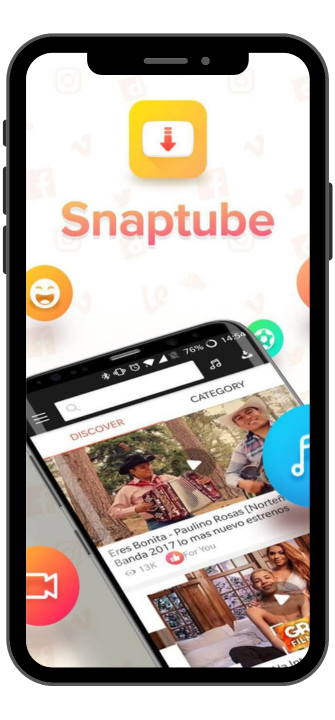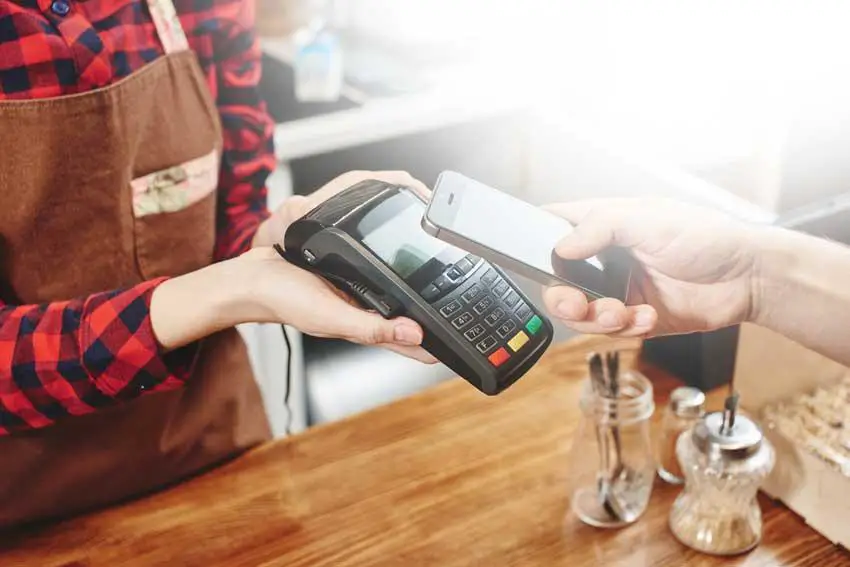Everything You Need to Know About Mobile Wallets and Contactless Payments
Category: Mobile Technology
Date: April 2023
Views: 1.29K
1. Introduction
Mobile wallets have revolutionized the way we make digital payments. With the rise of contactless payment technologies, mobile wallets have become increasingly popular, providing a convenient and secure way to pay for goods and services online and in-store. In this ultimate guide to digital payments, we will explore everything you need to know about mobile wallets, from how they work to the different types available and their unique features. Here are some key points to keep in mind:
Mobile wallets are digital payment tools that allow you to store payment information securely on your mobile device.
They provide a convenient and efficient way to make online and in-store purchases without the need for cash or physical cards.
With features like biometric authentication, NFC technology, and tokenization, mobile wallets offer a high level of security to protect your payment information.
Different types of mobile wallets are available, including digital wallets, e-wallets, virtual wallets, and payment apps like Apple Pay, Google Wallet, and Samsung Pay.
In this guide, we will explore the advantages of mobile wallets, how they work, and their integration with credit/debit cards, as well as their unique features such as peer-to-peer payment, loyalty programs, and budgeting tools.
With the increasing adoption of mobile payment technology, understanding the ins and outs of mobile wallets is crucial. This guide will provide you with everything you need to know about mobile wallets, from security features to international payment options, so you can make informed decisions about how you choose to pay for goods and services.
2. What are Mobile Wallets?
Mobile wallets, also known as digital wallets or e-wallets, are digital payment tools that allow you to store payment information securely on your mobile device. They offer a convenient and efficient way to make purchases without the need for cash or physical cards, making them a popular choice for consumers around the world. Here are some key points to keep in mind:
Mobile wallets allow you to store payment information, such as credit/debit card details, bank account information, and other payment methods, on your mobile device.
You can use mobile wallets to make online and in-store purchases by simply tapping your device or scanning a QR code.
Mobile wallets can be used to make payments at merchants that accept contactless payments, which are becoming increasingly common.
Mobile wallets offer a high level of security through features such as biometric authentication, tokenization, and fraud detection.
Different types of mobile wallets are available, including digital wallets, e-wallets, and virtual wallets, each with their unique features and benefits.
In short, mobile wallets offer a convenient and secure way to make payments using your mobile device, whether you're shopping online or in-store. They offer a high level of security and allow you to store multiple payment methods in one place, making them a versatile tool for managing your finances. In the next section, we'll explore the advantages of mobile wallets in more detail.
3. Advantages of Mobile Wallets
Mobile wallets provide a range of benefits for users, including:
Convenience: Mobile wallets enable users to make transactions quickly and easily using their smartphones, eliminating the need to carry cash or cards.
Security: With mobile wallets, users can keep their payment information secure and encrypted, reducing the risk of fraud and theft.
Accessibility: Mobile wallets can be used anywhere, anytime, as long as the user has a smartphone and an internet connection.
Speed: Mobile payments can be processed much faster than traditional payment methods, reducing checkout times and making transactions more efficient.
Cost-effectiveness: Mobile wallets often offer lower transaction fees than traditional payment methods, making them a cost-effective option for users.
Integration with other services: Many mobile wallets integrate with other services such as loyalty programs, budgeting tools, and peer-to-peer payment services, making them a convenient all-in-one solution for users.
Overall, the advantages of mobile wallets make them an increasingly popular payment method for consumers and businesses alike.
4. Different Types of Mobile Wallets
There are several types of mobile wallets available to consumers, each with their own unique features and benefits. Here are some of the most common types:
Digital Wallets: A digital wallet is a mobile app that stores payment information and can be used to make online or in-app purchases. Examples include PayPal and Google Wallet.
E-Wallets: An e-wallet is a mobile app that stores payment information and can be used to make both online and in-store purchases. E-wallets often include additional features such as loyalty program integration and budgeting tools. Examples include Apple Pay and Samsung Pay.
Virtual Wallets: A virtual wallet is a mobile app that allows users to store payment information and make transactions without a physical payment card. Virtual wallets often use a QR code or other type of barcode to initiate transactions. Examples include Alipay and WeChat Pay.
Apple Pay: Apple Pay is a digital wallet that allows users to make purchases in-store, online, and in-app using their Apple devices. Apple Pay uses NFC technology for contactless payments and also integrates with loyalty programs and peer-to-peer payment services.
Google Wallet: Google Wallet is a digital wallet that allows users to make online and in-app purchases using their Google account. It also offers peer-to-peer payment services and integrates with loyalty programs.
Samsung Pay: Samsung Pay is a mobile payment service that allows users to make payments in-store, online, and in-app using their Samsung device. Samsung Pay uses both NFC and MST (magnetic secure transmission) technologies for contactless payments and also integrates with loyalty programs and peer-to-peer payment services.
By understanding the different types of mobile wallets available, users can choose the one that best suits their needs and preferences.
5. How Mobile Wallets Work
Mobile wallets work similarly to physical wallets, but instead of carrying cash and cards, they store digital information that can be used to make payments. Here's how they work:
Storing Information: Mobile wallets store information such as credit/debit card details, bank account information, loyalty program information, and more.
Authentication: When making a payment, the mobile wallet will authenticate the user's identity using biometric authentication (such as fingerprint or face recognition) or a PIN.
Tokenization: The mobile wallet will then create a unique token for the payment transaction, which is sent to the payment processor instead of the actual card number, ensuring that the user's sensitive information is not shared.
Payment Processing: The payment processor will then validate the token and process the payment.
Confirmation: The user receives a confirmation message once the payment is completed.
Mobile wallets use contactless payment technology, such as NFC or QR codes, to communicate with the payment terminal. The user simply needs to hold their mobile device near the terminal to initiate the payment process.
Overall, mobile wallets provide a convenient and secure way to make payments, reducing the need to carry cash or cards and offering added layers of security such as biometric authentication and tokenization.
6. Payment Security
Mobile wallets have several security features that make them a safe and reliable option for digital payments. Here are some of the ways that mobile wallet providers ensure secure transactions:
Biometric Authentication: Mobile wallets use biometric authentication such as fingerprint recognition, facial recognition, or iris scanning to ensure that only authorized users can access the app and make transactions.
Tokenization: Mobile wallet providers use tokenization to secure users' payment information. Tokenization is the process of replacing sensitive payment information such as credit card numbers with a unique token that has no intrinsic value and cannot be used for fraudulent transactions.
Fraud Detection: Mobile wallet providers use advanced fraud detection algorithms to detect and prevent fraudulent transactions. These algorithms analyze various factors such as user behavior, transaction history, and location data to identify suspicious activity and prevent unauthorized transactions.
In addition to these security features, mobile wallets also use various encryption techniques and secure communication protocols to protect users' sensitive information.
Overall, mobile wallets offer a secure and convenient way to make digital payments, and their security features make them a reliable option for users who value privacy and security.
7. Contactless Payment Technology
As the world becomes increasingly digital, contactless payment technology has become more prevalent, and mobile wallets are at the forefront of this trend. Some of the most common contactless payment technologies used in mobile wallets include:
NFC (Near Field Communication): This technology allows for the wireless transfer of data between two devices that are in close proximity to each other. In the case of mobile wallets, an NFC-enabled smartphone can communicate with a payment terminal to complete a transaction.
QR Code Payment: Quick Response (QR) codes are used in mobile wallets to initiate a transaction. The user scans the code presented by the merchant, and the payment is processed through the mobile wallet.
Tap-and-Go Payment: Also known as "wave and pay," this technology allows users to make payments by simply waving their smartphone over a payment terminal. The transaction is completed using NFC technology.
These contactless payment technologies offer several advantages, including speed, convenience, and reduced physical contact, which is especially important during the COVID-19 pandemic. Mobile wallets provide users with a safer and more efficient way to make payments without the need for physical cash or cards.
8. Mobile Wallet Integration with Credit/Debit Cards
One of the major advantages of mobile wallets is their ability to integrate with credit and debit cards, making it easy to use these cards for online and in-store purchases. This integration allows for faster and more convenient payments, as users can simply add their card information to their mobile wallet and make purchases with just a few taps on their smartphone.
Some popular mobile wallets that offer credit and debit card integration include Apple Pay, Google Wallet, and Samsung Pay. These mobile wallets use Near Field Communication (NFC) technology to communicate with payment terminals at checkout, allowing for seamless and secure transactions.
Mobile wallet integration with credit and debit cards also allows for easier tracking of transactions and spending. Users can view their transaction history and track their spending within the mobile wallet app, making it easier to manage their finances.
Overall, mobile wallet integration with credit and debit cards offers a convenient and secure payment method for both online and in-store purchases. With the rise of contactless payment technology and the increasing popularity of mobile wallets, this integration is becoming more commonplace and is expected to continue to grow in the coming years.
9. Peer-to-Peer Payment
Mobile wallets also offer peer-to-peer payment options, allowing users to send money to other individuals without the need for cash or checks. Here are some popular P2P payment options available with mobile wallets:
Venmo: Owned by PayPal, Venmo allows users to send and receive money from friends and family for free. Users can link their bank accounts or credit/debit cards to Venmo to fund their transactions. Venmo also offers a social media-like feed where users can see and like their friends' transactions.
Zelle: This P2P payment service is offered by many major US banks, including Bank of America, Chase, and Wells Fargo. Users can send and receive money through their bank's mobile app or website using just their email address or mobile phone number. Zelle transactions are typically completed within minutes, making it a popular option for splitting bills or paying back friends quickly.
Cash App: This mobile payment service, owned by Square, allows users to send and receive money for free. Cash App also offers a debit card, called the Cash Card, which allows users to spend their Cash App balance at merchants that accept Visa. Users can also buy and sell bitcoin through Cash App.
Mobile wallets make P2P payments easy and convenient. Users can quickly and securely send money to their friends and family, even if they don't have cash on hand or if they're in different locations.
10. International Mobile Payment
Mobile wallets have made it easy for people to make payments on-the-go, and this convenience extends to international transactions as well. With the rise of globalization, international mobile payment systems have become increasingly popular. These payment systems allow people to transfer money to anyone in the world with just a few taps on their phone.
One popular international mobile payment system is Alipay. Alipay is a mobile wallet app that originated in China and is now used in more than 80 countries. The app allows users to pay for goods and services, transfer money to other users, and pay bills. Another popular international mobile payment system is WeChat Pay, which also originated in China and is now used in more than 40 countries. WeChat Pay allows users to make payments, transfer money to other users, and pay bills, among other things.
In addition to Alipay and WeChat Pay, there are many other international mobile payment systems available, each with their own unique features and benefits. These systems are particularly useful for travelers, expats, and anyone who needs to make payments to people in other countries.
One important thing to note about international mobile payments is that they may be subject to currency conversion fees and other charges. It is important to check the terms and conditions of each payment system before using it for international transactions.
11. Mobile Wallets and Cryptocurrency Payment
Cryptocurrency has gained popularity over the years as a new form of digital payment. Some mobile wallets have integrated with cryptocurrency payment, allowing users to store and manage their cryptocurrencies alongside their traditional fiat currency.
Mobile Wallets and Blockchain Technology: Mobile wallets use blockchain technology to facilitate cryptocurrency transactions securely. Blockchain is a decentralized digital ledger that records transactions on multiple nodes, making it secure and tamper-proof.
Mobile Wallets and Cryptocurrency Wallets: Some mobile wallets allow users to connect their cryptocurrency wallets to their mobile wallet, providing a centralized platform to manage all their digital assets.
Mobile Wallets and Cryptocurrency Exchange: Some mobile wallets have integrated with cryptocurrency exchanges, allowing users to buy, sell and trade cryptocurrencies from within their mobile wallet.
Mobile Wallets and Stablecoins: Stablecoins are a type of cryptocurrency that is pegged to a stable asset such as fiat currency, gold or other cryptocurrencies. Some mobile wallets have integrated with stablecoin payment, allowing users to pay with stablecoins instead of fiat currency.
Mobile wallets have opened up new possibilities for cryptocurrency payment, making it more accessible and convenient for users. However, it is important to note that not all mobile wallets support cryptocurrency payment, and users should check with their respective mobile wallet providers to ensure that they support cryptocurrency payment.
12. Mobile Banking and Budgeting Tools
Mobile wallets are not just limited to digital payments, but they also offer mobile banking and budgeting tools. With mobile banking, users can access their bank accounts, transfer funds, and pay bills directly from their mobile wallets. This feature allows users to manage their finances on-the-go, without the need to visit a physical bank.
Additionally, many mobile wallets also offer budgeting tools that help users track their spending and manage their finances. These tools allow users to categorize their expenses, set budget limits, and receive alerts when they reach their spending limits. This feature is especially useful for people who want to keep track of their spending and avoid overspending.
Some of the popular mobile banking and budgeting tools offered by mobile wallets include:
Mint: A budgeting tool that helps users track their expenses and create a budget.
PocketGuard: A budgeting app that allows users to track their spending and receive alerts when they are close to reaching their budget limit.
YNAB (You Need a Budget): A budgeting tool that helps users track their expenses and create a budget plan.
Overall, mobile wallets have evolved from just a payment method to a complete financial management tool, providing users with the convenience and flexibility they need to manage their finances efficiently.
13. Loyalty Programs and Subscription Payment
In addition to making payments, mobile wallets also offer features that allow customers to save money and earn rewards. Loyalty programs are a popular way for mobile wallet providers to keep customers coming back. Users can link their loyalty cards to their mobile wallets and earn rewards for purchases made with their mobile wallets. These rewards can then be used to pay for future purchases, helping customers save money.
Mobile wallets also offer subscription payment options, which allow users to pay for recurring services or products, such as streaming services or monthly subscriptions, directly from their mobile wallet. This feature helps customers manage their finances and avoid missed payments, as they can set up automatic payments from their mobile wallets.
Furthermore, mobile wallets can also help merchants to build loyalty among customers. By offering rewards and discounts through mobile wallets, merchants can incentivize customers to make purchases and return to their store. This can lead to increased customer satisfaction and retention, ultimately benefiting the merchant's bottom line.
14. Transaction Limits and One-Touch Payment
Mobile wallets come with different transaction limits, which is the maximum amount of money you can transfer or spend in a single transaction or a day. These limits are often set by the mobile wallet provider, the bank, or the card issuer. Some mobile wallets allow you to increase your transaction limits by providing additional personal information or verifying your identity.
One-touch payment is a convenient feature offered by some mobile wallets that allows you to make payments with a single touch on your phone screen. This feature is especially useful for small transactions, such as buying a cup of coffee or paying for parking. One-touch payment uses biometric authentication, such as fingerprint or facial recognition, to verify your identity and complete the transaction quickly and securely.
It's important to note that while one-touch payment is convenient, it can also increase the risk of unauthorized transactions if someone else gains access to your mobile device. Therefore, it's important to keep your device secure and enable additional security features, such as PIN codes or biometric authentication.
15. Conclusion
Mobile wallets have become increasingly popular due to their convenience, security, and ease of use. With a variety of mobile wallet options available, users can choose the one that best suits their needs and preferences. Contactless payment technology has also made mobile payments more accessible and safer in a post-pandemic world. As mobile wallets continue to evolve, they are integrating with credit/debit cards, supporting peer-to-peer payments, facilitating international payments, and even supporting cryptocurrency payments. With features such as loyalty programs, subscription payment, transaction limits, and one-touch payment, mobile wallets are becoming a complete solution for all payment needs. As we move towards a cashless society, mobile wallets are set to become the primary mode of payment.





















0 Comments, latest